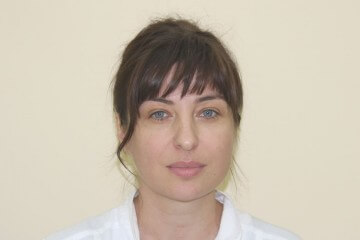Key points
- Carboxytherapy is a procedure to rejuvenate skin cells by saturating them with carbon dioxide. Carboxytherapy can be used on the face, eyelids, neck, stomach, arms, legs and buttocks. The procedure is used to treat cellulite, dark circles under the eyes and stretch marks.
- Carboxytherapy comes in two varieties: injections and masks (in simple terms). Gas injections help against cellulite, improve skin condition, smooth out wrinkles and even cure certain diseases associated with pinched nerves in the back, spine and neck area.
- Masks can also help get rid of wrinkles, plus they moisturise your skin and improve your complexion.
Pros and cons of the carboxytherapy procedure
Opinions/feedback from cosmetologists
After the session, there may be redness of the skin and slight swelling, which will go away within a few days. If these symptoms persist for longer or increase in intensity, always consult a doctor. After the treatment, it is advisable to limit sun exposure and avoid sudden temperature fluctuations.
Opinion of reputable international sources on carboxytherapy
Ten women aged 29 ± 6.1 years were selected, and all underwent eight treatment sessions with an interval of seven days between sessions.
After treatment, there was a significant reduction in cellulite from grade III to grade II, and this improvement correlated with better fibrotic line organisation and removal of fatty tissue lines in the treated areas. observed through the diagnosis of panoramic ultrasound images.
Conclusion
Carboxytherapy is an effective treatment for cellulite in the buttocks and rear thighs of healthy women.
Conclusion: Carboxytherapy can provide a small but temporary reduction in subcutaneous fat. Unfortunately, this effect did not last long after stopping the treatment.
Q&A
- Already after the first session of Carboxytherapy, the body's functionality increases, cells and tissues become saturated with nutrients, pain and spasm disappear and the immune defences are activated.
- Weakened cartilage, vessels, nerve appendages are supplied with oxygen, the symptoms of degenerative-dystrophic disorders become less pronounced. After the treatment, the development of the pathology slows down. Circulation of blood to the affected areas is increased.
- Muscle spasm disappears
- The inflammatory process is reduced
- The pressure of the vertebrae on the nerve endings is reduced
- Cerebral circulatory disorders, dizziness are alleviated or disappear
- The outflow of lymphatic fluid is improved
- Functionality of damaged spinal segments is restored
- Spinal cord activity is restored
- The cartilage layer is saturated with nutrients and the regeneration of damaged tissue is accelerated
- Signs of meteopathy (meteosensitivity) are relieved
- Improves nervous system function and strengthens sleep
- Venous outflow is restored
- Accelerates the breakdown of fat
- Stimulates metabolic processes
- The body starts to produce collagen
- The body's defences are strengthened
- Gas injections have anti-inflammatory, analgesic, antimicrobial, rejuvenating and restorative effects.
- You will already feel better after the first treatment. The course of treatment lasts between 3 and 10 sessions. The doctor decides how long the treatment should be, taking into account your age, your general condition and the severity of your condition. The effect after 1 course lasts 6 to 12 months. To maintain the effect, you can have an additional treatment once every 4 weeks.
No significant complications or marked unpleasant effects have been reported with CO2 injections. The skin may be uncomfortable with a needle puncture and minor bruising after injection, as well as a slight swelling, which disappears after a short period of time. The carbon dioxide is harmless and is expelled via the lungs. During the procedure, the patient may experience a slight tingling, burning or cooling sensation at the injection site, which subsides after a few minutes.
*The occurrence of side effects during carboxytherapy depends on the individual body.
- Acute infectious or viral disease
- Increased body temperature, fever
- Serious coronary heart disease
- Thrombosis and thrombophlebitis
- Acute embolism
- Hypertension in decompensation
- Renal and liver failure
- Stroke and previous stroke
- Gangrene
- Mental illnesses
- Epilepsy
- Clotting disorders, patients taking anticoagulants
- Pregnancy
- Breastfeeding
- Injection intolerance
Carboxytherapy is successfully used both for treatment and aesthetic purposes in cosmetology and provides:
- oxygenation of the cells;
- deep restructuring of the skin and stimulation of the synthesis of the carcass proteins - collagen;
- the relief of inflammatory reactions;
- The breakdown of fat and the removal of toxins from cellulite;
- stimulation of lymphatic drainage.
Thus, carboxytherapy is indicated in the following cases:
- Fighting age-related changes - eliminating wrinkles.
- Eliminates loose skin (inner surface of shoulders and hips, knee area).
- Elimination of localised fat deposits - double chin, bags under the eyes, fat deposits in the abdomen, waistline, above the knees, etc.
- Elimination of cellulite.
- Combat post-acne - scars, stagnant spots, uneven skin texture.
- Recovery from plastic surgery and traumatic cosmetic procedures.
- Elimination of stretch marks (stretch marks).
- Reducing the lividity under the eyes.
- Osteoarthritis, arthritis out of remission, joint and muscle pain.
- Osteochondrosis of the spine, protrusion and intervertebral hernia.
- Chronic fatigue syndrome.
- Muscle-tonic syndrome.
- Autonomic dysfunction syndrome.
- Headaches, including cervicogenic headaches.
- Back pain.
- Foot joint disease, diabetic angiopathy.
- Chronic venous insufficiency.
- Trophic ulcers are chronic wounds.
- Lymphatic and venous swelling.
- Psoriasis.
- Scars on the skin.
- Alopecia in its early stages.
- Comprehensive treatment for obesity.
- Age-related skin changes.
- Wrinkles.
- Flabby skin.
- Lipomatosis.
- Cellulite.
- Stretch marks, stretch marks, scars.
- Acne.
Feedback from private users
A course of carboxytherapy also smoothed out my complexion. The fact is that I have darker skin around my nasolabial folds, which created the visual effect of their presence. That problem has now been solved
Р. S. I am writing this review almost a year after 1 course of Carboxytherapy. I was very much afraid that the effect would be short-lived. But fortunately, even after a year, my face looks amazing. Of course, the black spots are a little more visible, but overall my skin is no longer back to its original awful state
It's been a month now and the effect is still there! The woman outside the office said that the last time she had had the effect for five months. That's great. I hope so, too.
Prices
Prices for carboxytherapy can vary depending on the area and location of the injections.
Preparations
During a carboxytherapy session, carbon dioxide, rather than medication, is injected under the skin. It has a vasodilator effect and therefore promotes an immediate supply of oxygen to the skin cells. Patients notice a noticeable rejuvenating effect.
Before and after photos
Facial carboxytherapy reviews by cosmetology doctors
What problems can be treated with carboxytherapy
Correcting skin flabbiness and removing wrinkles
- The smoothness and elasticity of the skin depends on two factors - the content of hyaluronic acid in the tissue and the framework proteins collagen and elastin.
- Hyaluronic acid is an important component of the intercellular matrix. It is able to hold water molecules in excess of its own mass. This increases the visco-elastic properties of the dermis and makes it look moisturised, firm and fresh.
- The main elements of the fibrous dermis are collagen and elastin. Elastin fibres are mainly responsible for skin firmness, while collagen is responsible for resistance to age-related changes and durability.
- On average, the content of carcass proteins decreases by 1% every year. Exposure to carbon dioxide significantly stimulates metabolic processes and maintains the synthesis of components important to the dermis - collagen and elastin - at optimal levels.
Lipolytic effect of gas injections
Carboxytherapy is successfully used for localised elimination of fatty tissue. For this purpose, carbon dioxide is injected together with sterile saline solution. The saline solution is injected first, followed by CO2 injections. As a result, a chemical reaction is initiated to synthesise carbonic acid.
This compound is highly unstable and immediately dissociates to form hydrogen ions and hydrocarbonate. Hydrogen ions are powerful oxidising agents and, by interacting with fat tissue, lead to the local breakdown of lipids, i.e. they essentially just burn fat.
In parallel, the remaining CO2 molecules cause local hypoxia and provoke an increase in blood and lymphatic microcirculation. This promotes faster removal of lipid breakdown products, oxygenation of tissues, and activation of reparation processes. All this has an overall beneficial effect on the metabolism of the area, tones the skin and helps to tighten it after the loss of fat volume.
Elimination of cellulite
- Carbon dioxide not only burns localised fat deposits, but also combats the main factor for cellulite - fluid retention and localised poor circulation.
- Carboxytherapy improves vascular microcirculation, not only in the blood but also in the lymphatic system. The tissues are also oxygenated and toxins and metabolic products are eliminated.
Men
The procedure has no age restrictions and is indicated for both men and women at all times of the year.
How the invasive carboxytherapy procedure is carried out
- Our clinic uses a professional INDAP INSUF CO2 gas injection machine (Czech Republic) for injection carboxytherapy procedures, with which the flow rate and volume of the infiltrated gas can be controlled. The equipment complies with international ISO and CE standards.
- The device is connected to a metal cylinder via a carbon dioxide pressure regulator; the gas is administered using a device (probe) with a small needle (30 G1/2 insulin needle) directly through the patient's skin. The volume of CO2 administered is strictly dosed according to the area of insertion.
- The procedures are absolutely safe and painless, and best of all, you can get your facial and body carboxytherapy injections from us at an affordable cost in Moscow (see prices).
- There is no rehabilitation period.
- Carboxytherapy is a course of at least 4-10 treatments in a row (depending on the problem being treated), 5-10 days apart.
How does non-invasive carboxytherapy work?
- After cleansing, the beautician treats the skin with lotion and performs an enzyme peel. A gel activator and a mask are then applied and saturated for 20 to 25 minutes. The product is applied with a special device, allowing the active ingredients to penetrate deep into the epidermis. The carbon dioxide causes the blood vessels to dilate more intensively, saturating the skin with oxygen and essential elements.
- The beautician then removes the mask and applies an SPF cream. The entire injection-free carboxytherapy treatment takes around half an hour.
- After a course of non-invasive carboxytherapy the skin will become more sensitive, so you should beware of direct sunlight and always wear sunscreen after the treatment.
- Non-invasive carboxytherapy can be used as a mono-treatment to improve the overall condition of the skin, but for permanent results it is of course better to take a full course. In this case, injection-free carboxytherapy will improve blood circulation, reduce congestion, restore the skin's defences and oxygenate the skin.
- For minor skin problems, cosmetologists recommend undergoing a course of injection-free carboxytherapy once a year for overall skin recovery, while if more intensive intervention is required, the course should be repeated twice a year.
- Carboxytherapy is the subcutaneous or intradermal injection of medical (sterile) carbon dioxide (CO2) using micro-injections to achieve cosmetic and therapeutic effects.
- In aesthetic medicine, injectable carboxytherapy can be used both as a standalone procedure and as a comprehensive treatment for various aesthetic problems.
- The doctors at the clinic most often use injectable carboxytherapy as part of a combination treatment with other active ingredients, hyaluronic acid or other cosmetological techniques.
- Carboxytherapy injections can be given to different areas of the face, neck, décolleté, hips, shoulders and knees.
Preparing for the procedure
There is very little testing required before a gas shot can be administered. It is sufficient to have a general blood test from a vein to analyse the levels of vital cells and elements, as well as an electrocardiogram to rule out heart disease, and a visit to your GP, who will authorise you to undergo a course of carboxytherapy.
Carboxytherapy also requires the patient to do some simple preparation for the procedure:
- Avoid overexertion at least one day before treatment;
- Do not drink any alcohol 24 hours before the procedure;
- Avoid stress and overexertion, including psycho-emotional stress, and be in good spirits for at least 8 hours before carboxytherapy;
- Get a good night's sleep before the procedure;
- The last meal before carboxytherapy should be at least 2 hours ago;
- It is advisable to drink about a quarter of an hour before the gas injections with a glass of warm water.
Conclusion
Carbon dioxide injections (carboxytherapy) make the face and body slimmer and more beautiful: they help eliminate excess weight, smooth out wrinkles, remove bags under the eyes, help get rid of cellulite and treat varicose veins. Carbon dioxide injections are also indicated in cases of hair loss and alopecia. Carboxytherapy can also help relieve neck, back and joint pain.



















































